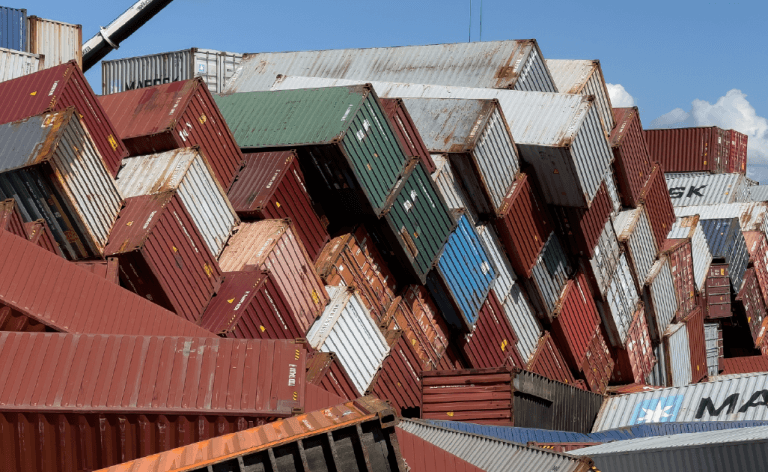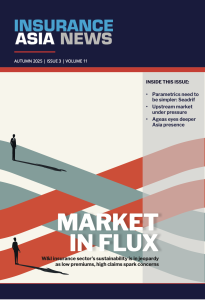Full Capacity: Of tit-for-tats – new calculus of global trade
October 18 2025 by Mithun Varkey
Welcome to Full Capacity, a weekly briefing on all the most important developments of the past week with a personal take on the news from our editor-in-chief, Mithun Varkey, delivered to your inbox every Saturday.
Brand overhaul. Marsh McLennan announced a plan to unify its powerhouse businesses under a single, master brand, no prizes for guessing, Marsh!
This new branding takes effect in January 2026 and then, throughout 2027, its four distinct businesses will fold into the new brand architecture in a phased transition.
Marsh and Mercer will both go to market under the Marsh brand, while Guy Carpenter will be reintroduced as Marsh Re.
Oliver Wyman will retain its name, presented as “a Marsh business”, with its operating unit becoming Marsh Management Consulting.
M&A update. Global broking giant Howden continued its Pacific build-out with the acquisition of Auckland-based Omni Insurance Brokers.
The deal enhances its reach in Auckland and expands into the central North Island and complements Howden’s combined broking business in New Zealand, now comprising Howden Broking NZ, Bridges Insurance, Sherpa, Howden Commercial Affinity and Howden Corporate.
Mainland’s marine steer. Huatai Insurance Brokers, a mainland broker backed by China Re, kicked off a new shipping insurance venture with BMS Group’s teams, BankServe and CLP.
In the deal, Huatai will handle the domestic underwriting, while BankServe and CLP focus on the international side of things.
It aligns with China’s “Chinese ship, Chinese Insurance” strategy, ultimately supporting the broader goals of the “Maritime Silk Road” and ensuring greater security for global supply chains.
Tech-tonic shifts. This was a week of intense cyber insurance coverage for us as the region’s industry leaders gathered in Singapore for the InsuranceAsia News Asia Pacific Cyber Risk and Insurance Summit on Wednesday.
The key takeaway? AI-related cyber risks are set to dominate corporate risk management in the next year, as highlighted by Veronica Tan from Singapore’s Cyber Security Agency.
According to Tan, the industry is “on the cusp of a transformation,” as a result of AI technology, with the impacts of its implementation just beginning to have an impact.
Meanwhile, the rise in large-scale cyber-attacks is pushing companies across the Asia Pacific to seriously consider cyber insurance.
Teck Siong Ng from Beazley pointed out that cyber risk has become a top concern for boards in recent years, especially after incidents like the Jaguar Land Rover breach.
On the pricing front, Axa XL’s Sam Bye remarked that rates have significantly dropped since the last hard market cycle, driven by 2018-2019 ransomware losses. With more capacity in the market, companies can now better manage their cyber risks, but the potential for rate increases remains on the horizon.
Meanwhile, Coalition’s Stephen Wares pointed to the critical need for SMEs to embrace cyber insurance: “Whilst the headlines all go to Jaguar Land Rover, Asahi, Qantas and Marks & Spencer, these are large companies and they will survive. But for SMEs, what can seem to be relatively small amounts of money can be devastating and shut down businesses.”
And he says there has never been a better time to buy cyber insurance, noting that “it is far easier to apply for than it’s ever been”, and prices have come down significantly since the heights of 2022.
Beyond the shipping lanes
Geopolitical risk, a dominant concern for businesses in 2025, is intensifying.
The long-running economic contest between the world’s two largest economies has opened a new front, signalling a protracted period of uncertainty.
In a tit-for-tat move, China instituted a special port fee for vessels linked to the US, marking a significant escalation in the ongoing economic tug-of-war between the two countries.
The fee, about US$56 per net ton, is set to be applied to all US-linked vessels, including ships owned by US enterprises, or entities with more than 25% US ownership; US-flagged, or built in the US vessels.
The sliding fee schedule, rising to US$157 per net ton by 2028, is a timeline of intended escalation.
Chinese authorities frame the fees as legitimate means to safeguard its interests, urging the US to rethink its “unreasonable suppression” of China’s maritime sector.
The broader implications of these measures are troubling: a retaliatory spiral that contracts global trade and heightens uncertainty.
Who bears the cost – the vessel owner or the charterer? The answer is buried in the fine print of charterparty agreements, which will likely become a fresh source of litigation.
And the repercussions extend beyond shipping costs.
The reciprocal port fees represent more than a maritime dispute – they are the physical manifestation of a fragmenting global economy.
While companies were puzzling out ways to deal with the US tariffs and port fees, they are now left to find a way around the latest development.
This is illustrated by the case of South Korean shipbuilder Hanwha Ocean.
While some Korean firms announced US investments to circumvent the Trump administration’s proposals, Hanwha Ocean now faces direct sanctions, with China targeting five of its US-linked subsidiaries.
This highlights the interconnected nature of global supply chains and the potential for collateral damage in this geopolitical standoff.
People moves
It wasn’t the busiest week for high-profile appointments in the region.
Notably, QBE Re has appointed Cindy Foo as its new head of treaty for Asia.
Allianz Trade promoted Yusuke Hata as regional head of Japan desk for North Asia and Singapore.
Do check out our weekly people move round-up to stay up to speed on the most important appointments in the region.
-
Full Capacity: The year that was
- December 20
This week's newsletter discusses an IAN exclusive, Chubb's leadership switch, India's FDI increase for insurers, Vietnam's regulatory changes, Swiss Re Institute's nat cat analysis, the launch of a new APAC MGA and a 2025 round-up.
-
Full Capacity: Climate crisis strikes at Southeast Asia’s doorstep
- December 13
This week's newsletter discusses Guy Carpenter's lawsuit, this week's M&A deals, China Re's leadership change, Japan's nat-cat update, P&I renewals the South Asia floods.
-
Full Capacity: Reckoning after Tai Po tragedy
- December 6
This week's newsletter discusses broker deals in Australia, DB's Fortegra acquisition, storms in Southeast Asia and the leadership change at Allianz Re.
-
Full Capacity: Rise of the machines: AI transition and job losses
- November 29
This week's newsletter discusses the HK fire, nat cat updates, Munich Re's Australia push, Korean Re's Gift City entry, Roojai's PE funding, a P&I merger, and the AI dilemma for the insurance market.
-
QBE | Elevating customer experience, humanising claims: QBE Asia’s ‘Solutions in a Box’
Vastly improving turnaround times and personalising service delivery, QBE Asia’s award-winning, end-to-end bundled claims solutions is a game-changer for the insurance industry.
-
Beazley | What does cyber protection look like from day 1 to day 600 and beyond?
Cybersecurity is no longer just an IT concern, but a governance issue that belongs on the boardroom agenda.
-
Sedgwick | Preparing for the next storm
Insurance industry needs to recalibrate, invest in innovation and strengthen systems, talent and data practices.
-
Peak Re | From climate modelling to market opportunity: Forging a new clarity on Southeast Asia’s climate risk
Southeast Asia's protection gap: a crisis of clarity, not just capital

